Amiran et al (1994)
Earthquake Catalog of Amiran et al (1994)
Explanation of Terminology
- The sign + after the year indicates that the earthquake may have occurred in that or the following year, as the source gives the year according to the Moslem (Hejira) era, without specification of month or day.
- Greenwich Mean Time (GMT) is used, rather than local time as in the previous catalogue,' in order to avoid the problem created by the difference between winter time (GMT + 2 hours) and summer time (GMT + 3 hours), introduced in Palestine in 1940. At present, the United Time Coordinated (UTC) is in worldwide use in technical literature
- Following the system used in the first catalogue (see n. 1), references consist of an abbreviation (see n. 2) or footnote number, with the page number(s) following a colon (e.g. 18:65 refers to n. 18, p. 65). The general sources of each event are given in the 'References' column, while sources referring to specific details appear within parentheses in the 'Details' column
- Reports on felt earthquakes since 1940, for which no specific source is quoted, are based on records published by the local press. MMS intensities have been assigned by Amiran. In a few cases, reports by local residents have been noted.
Earthquake Catalog


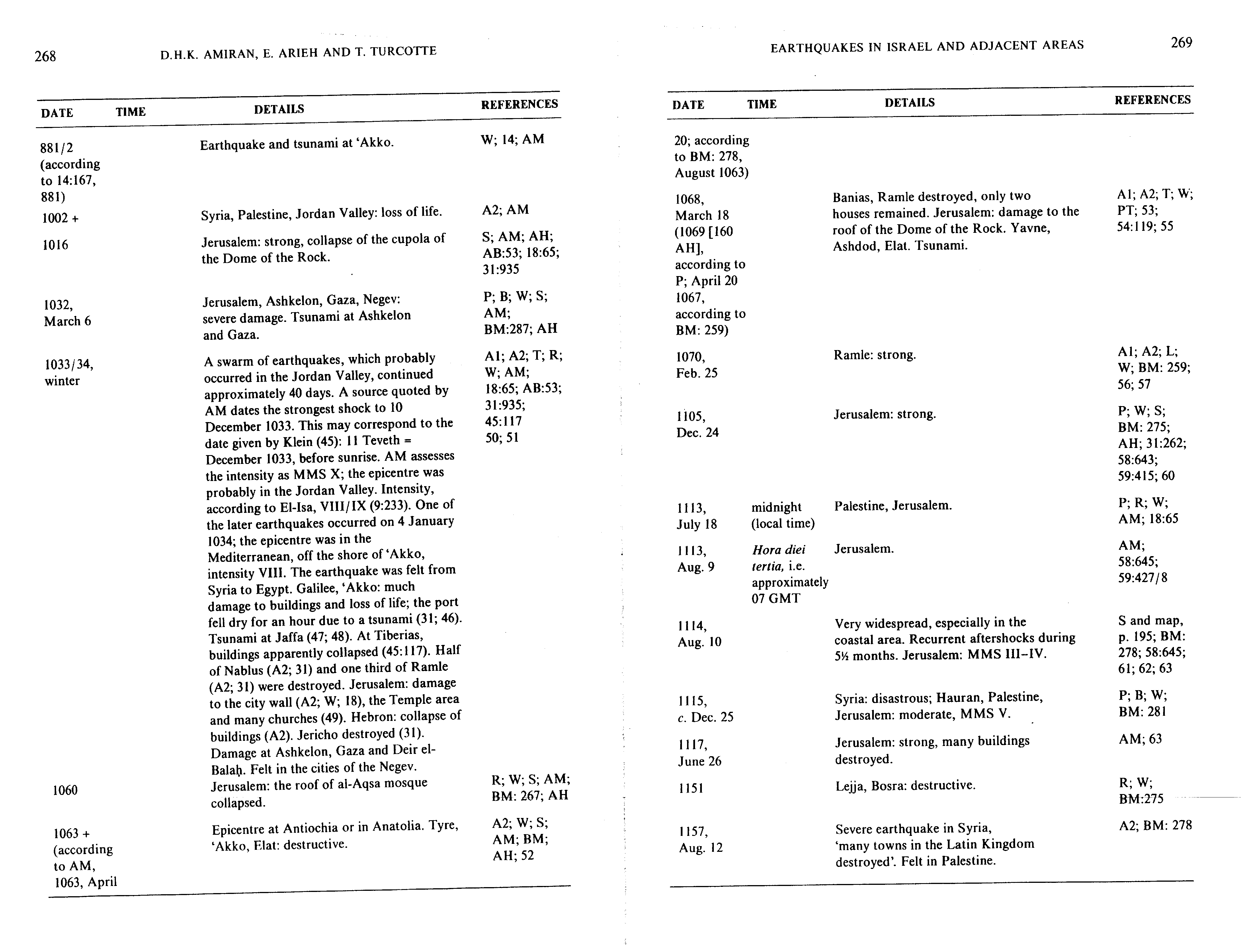
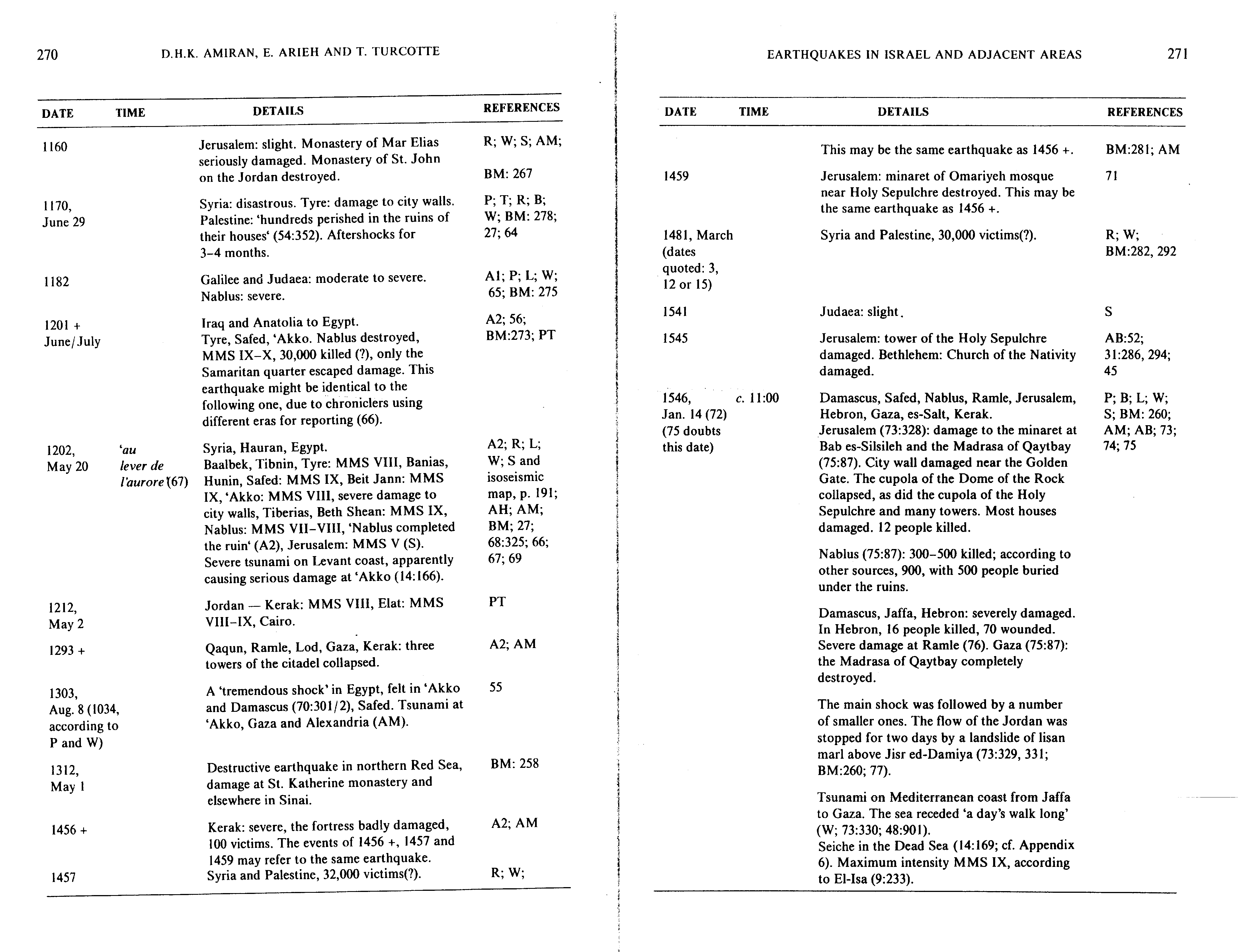
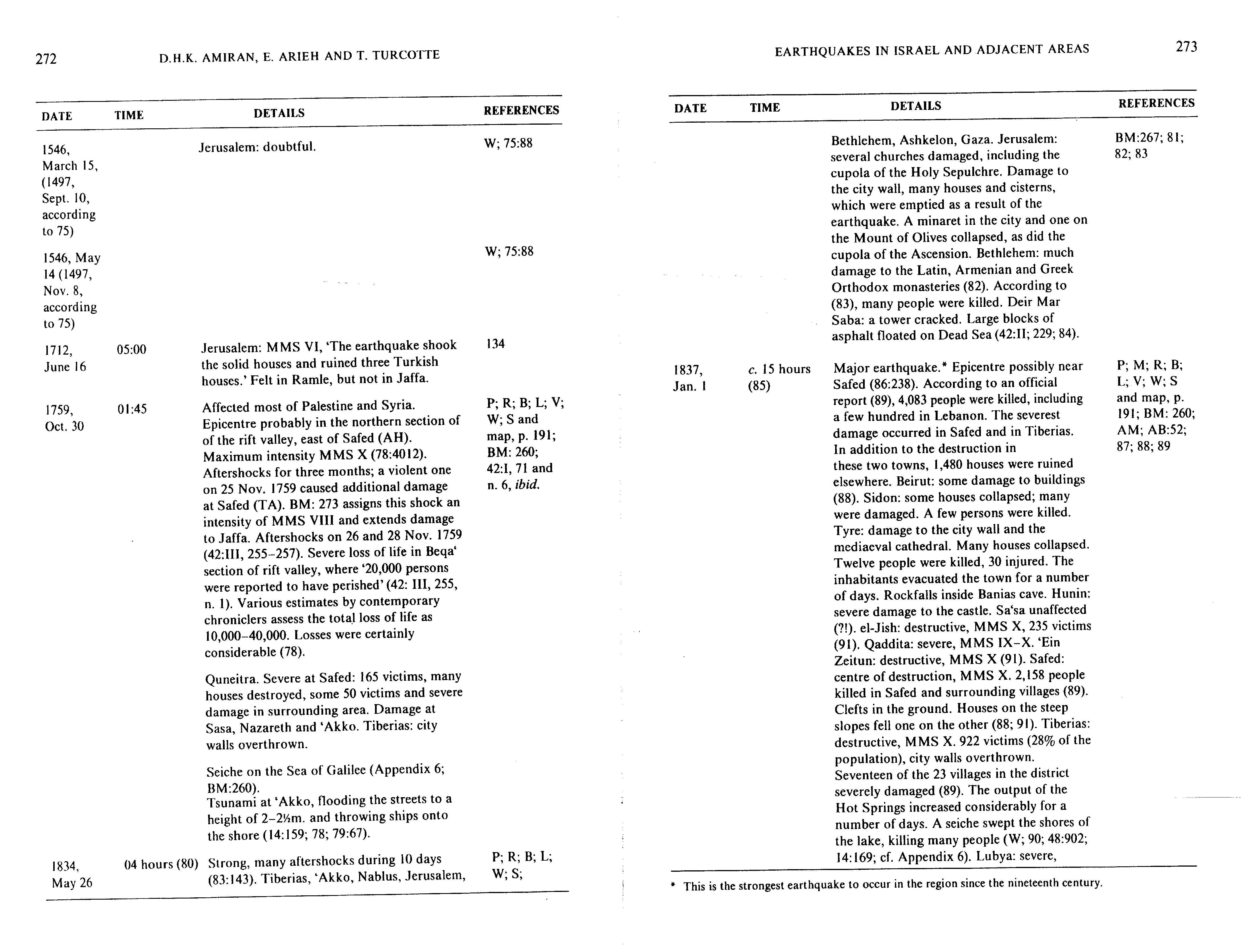
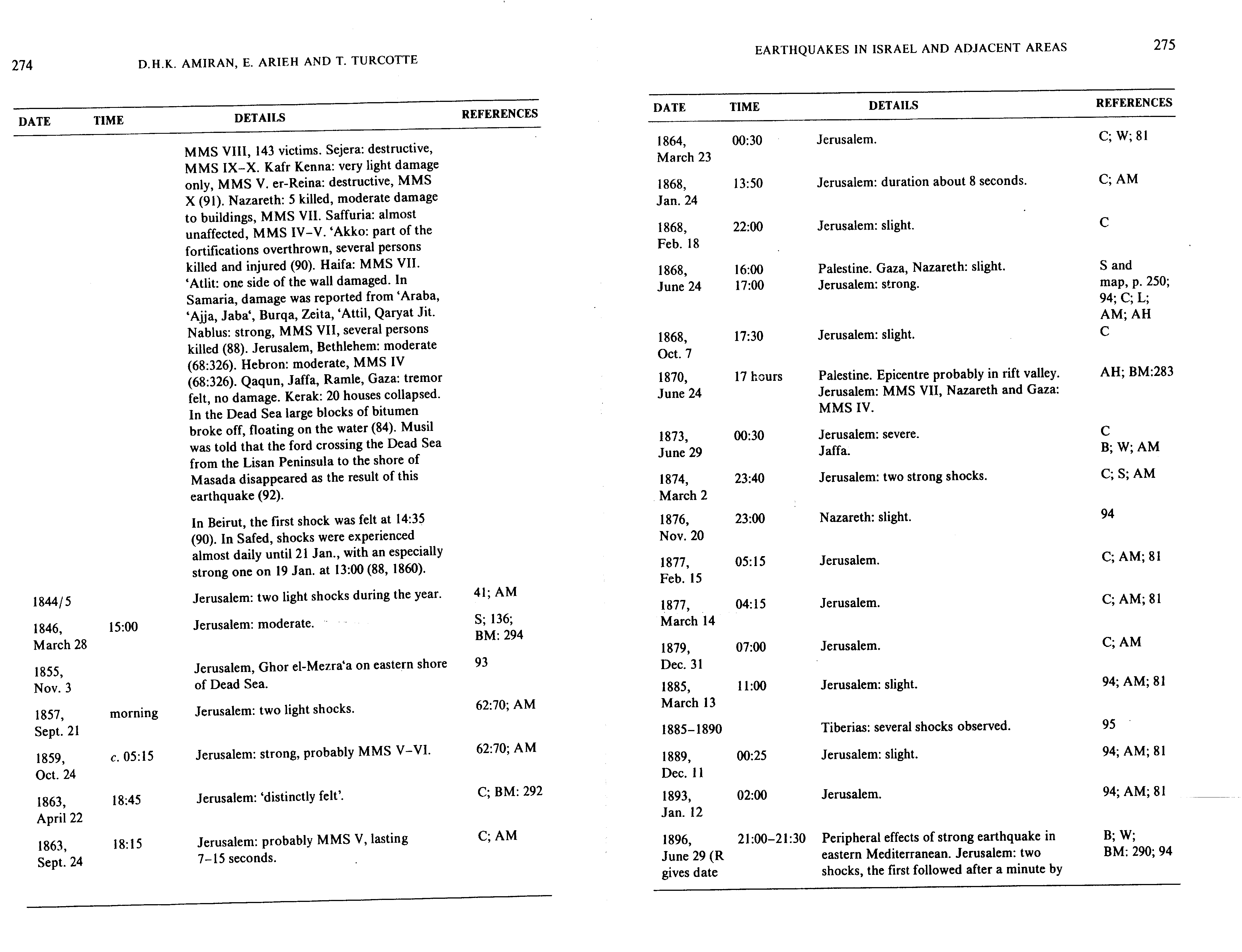

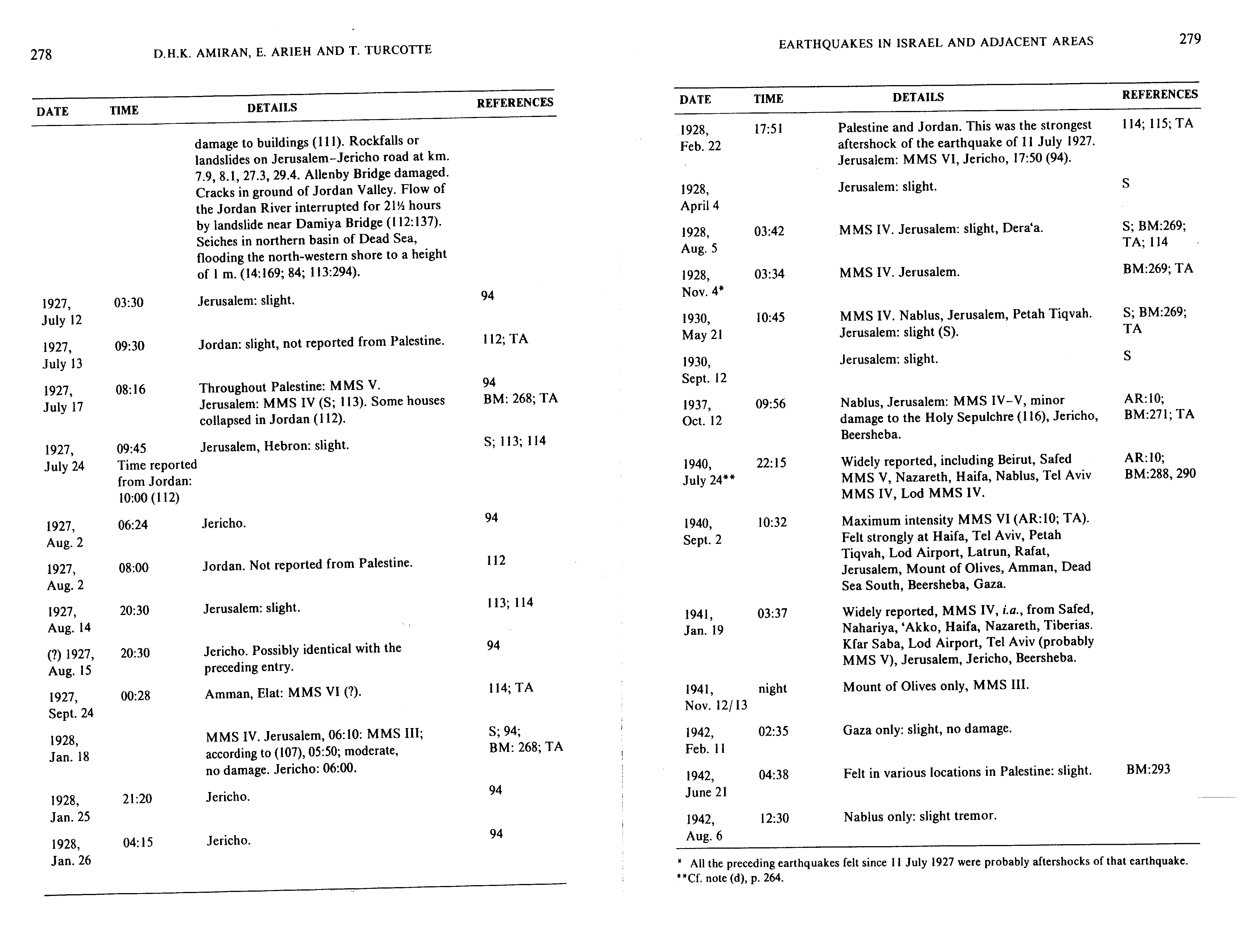
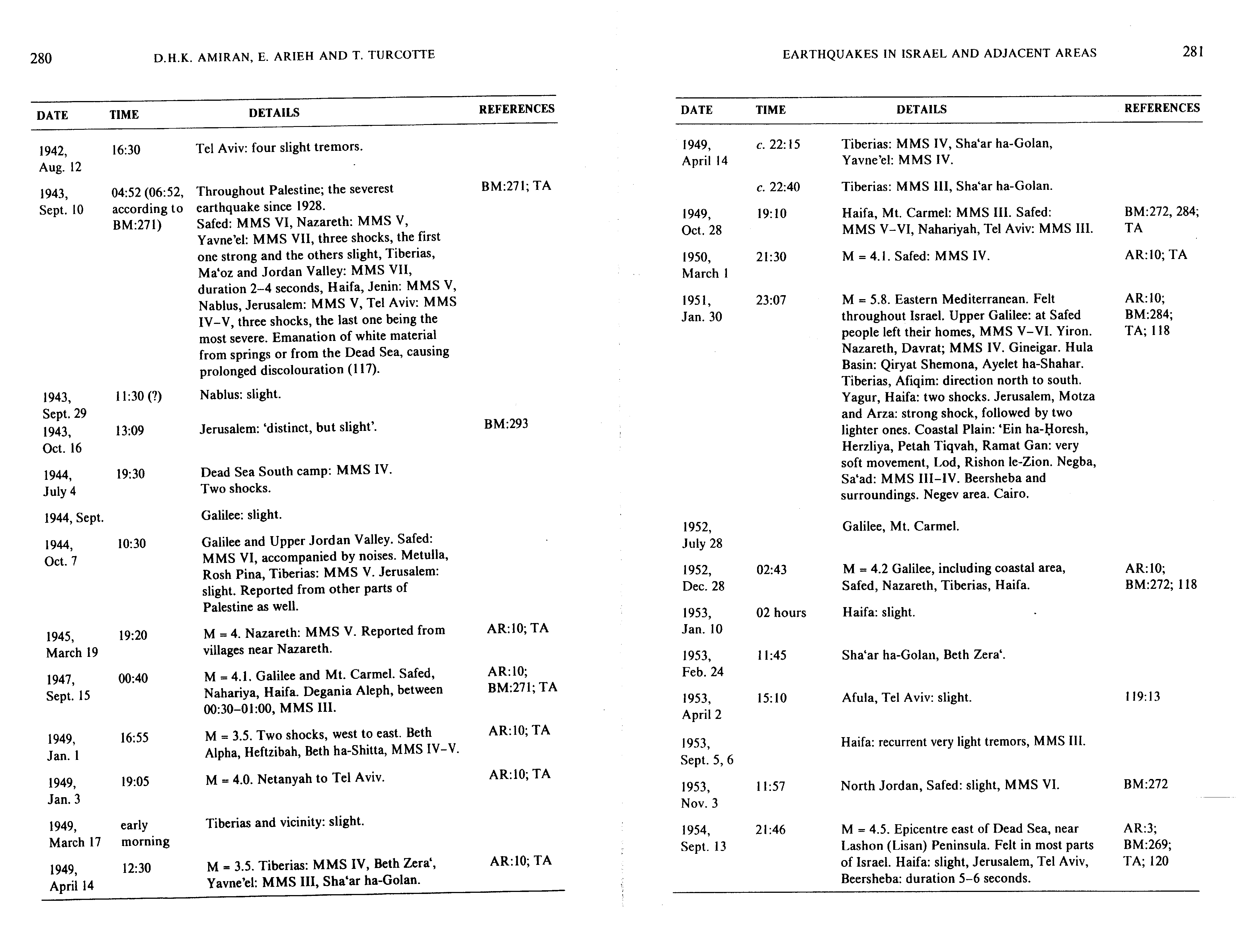

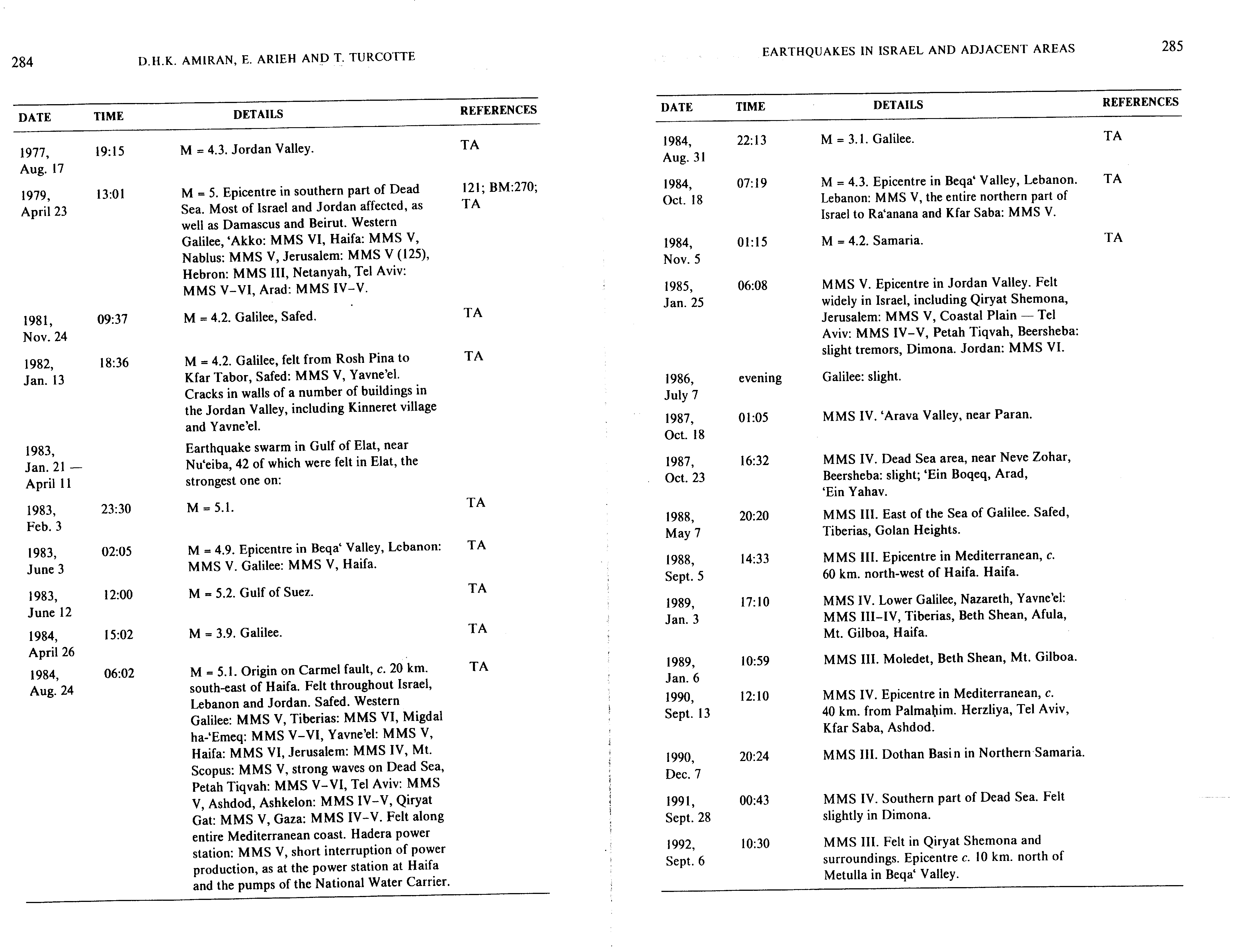
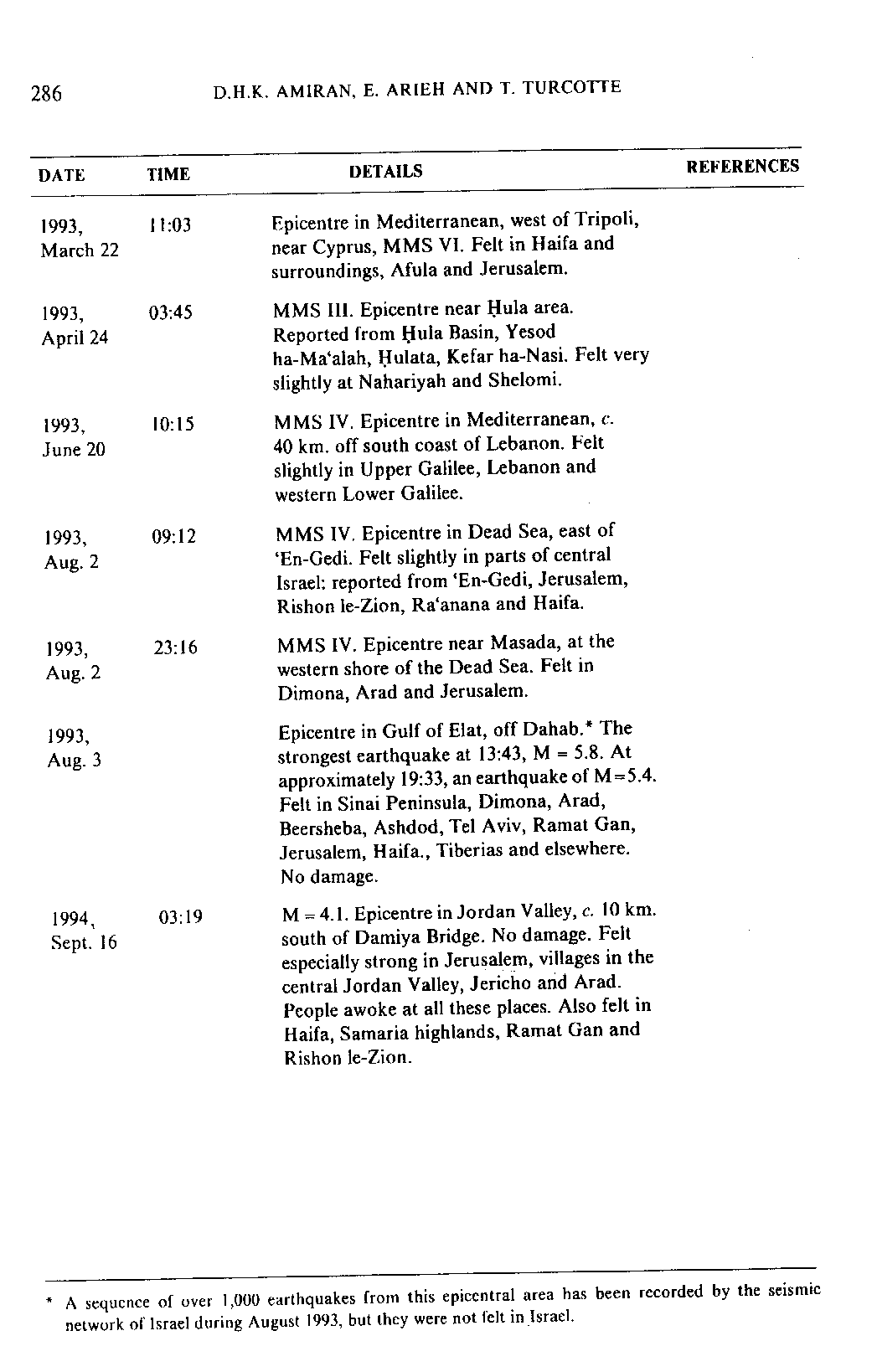
Appendix 1 - Distant Earthquakes



Appendix 2 - Doubtful Earthquakes


Appendix 3 - MMI Scale
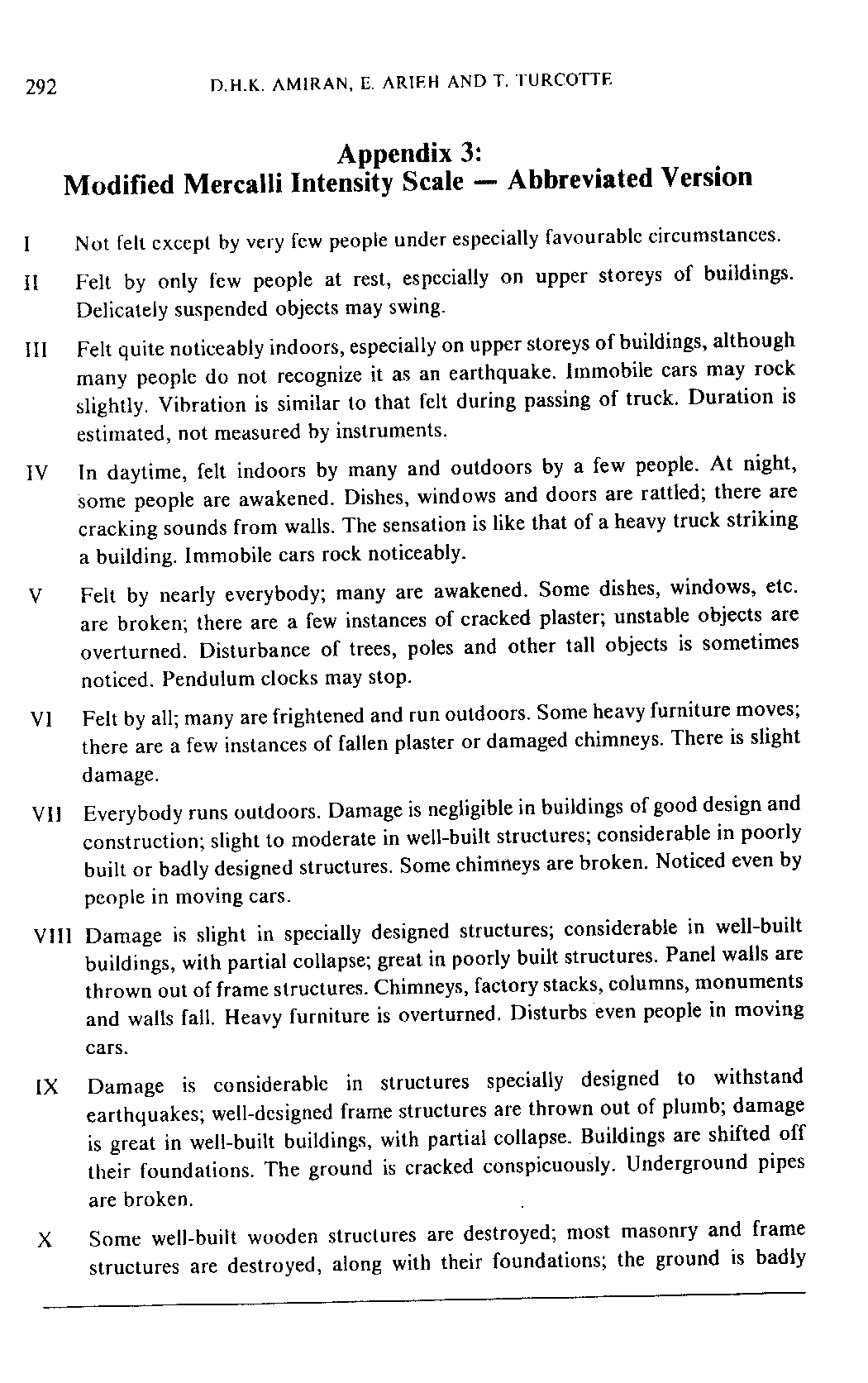

Appendix 4 - MMI to Magnitude Correlation

Appendix 5 - Tsunamis on the Mediterranean Coast

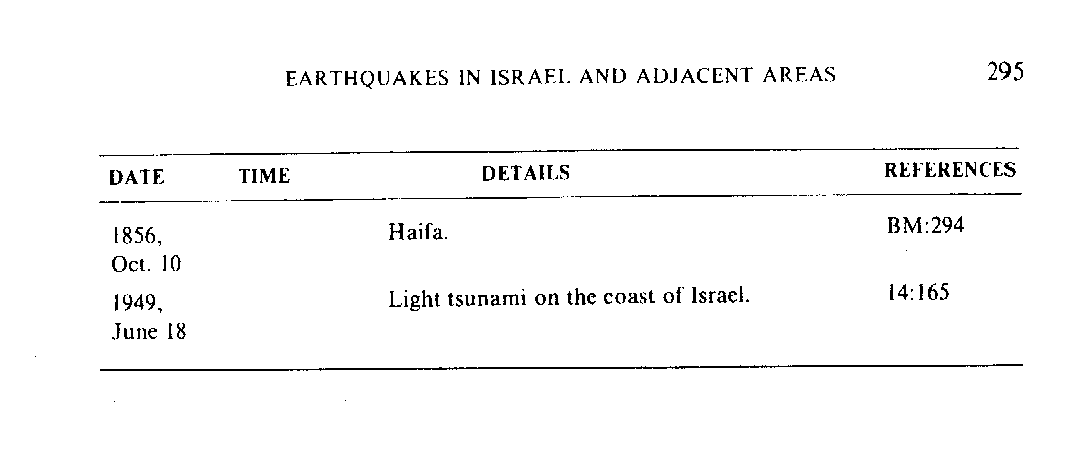
Appendix 6 - Seiches in the Dead Sea and Sea of Galilee
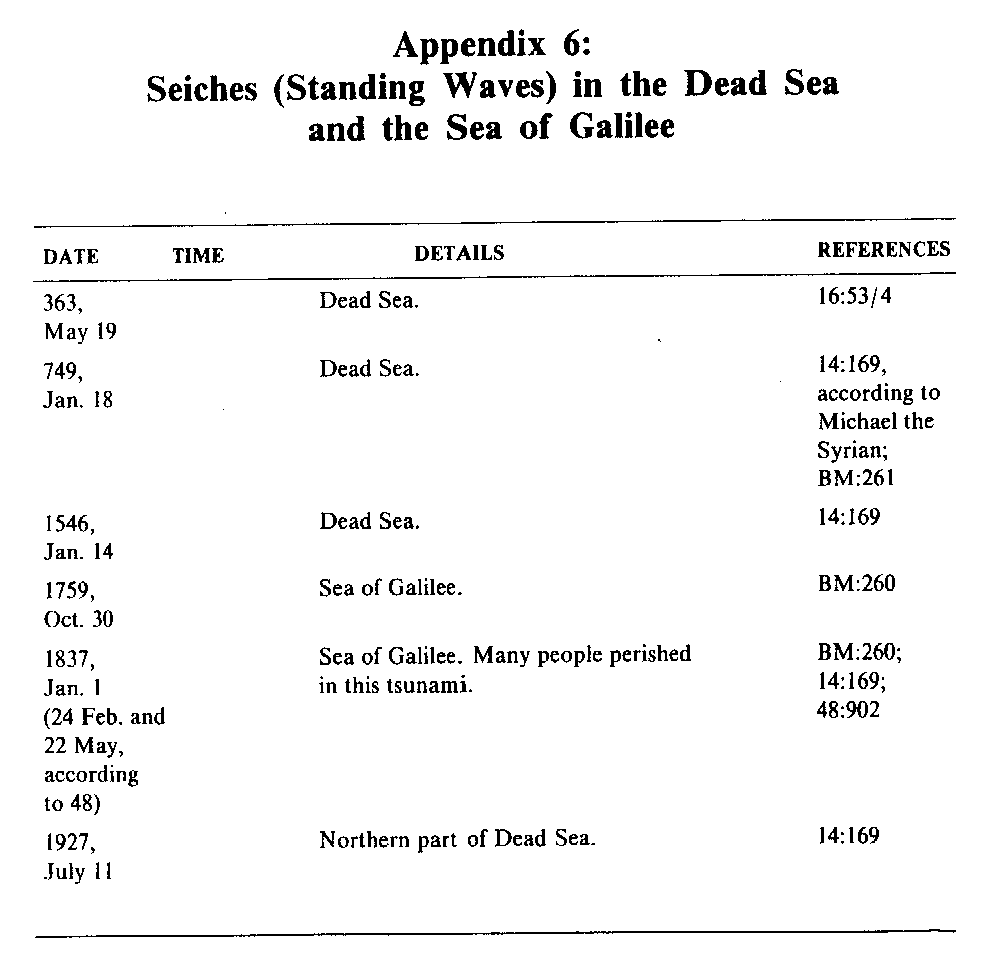
Abbreviations, Bibliography, and Footnotes
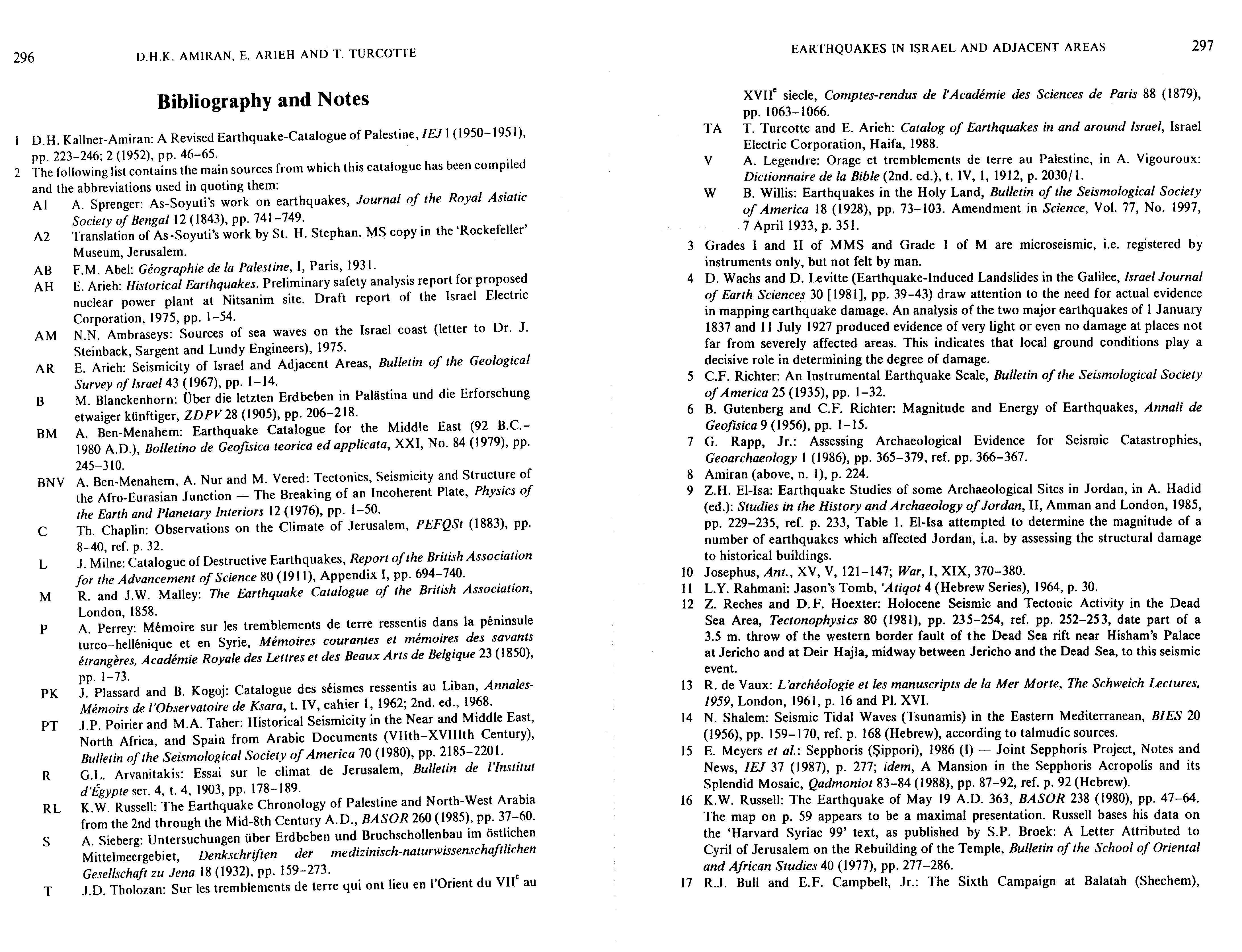

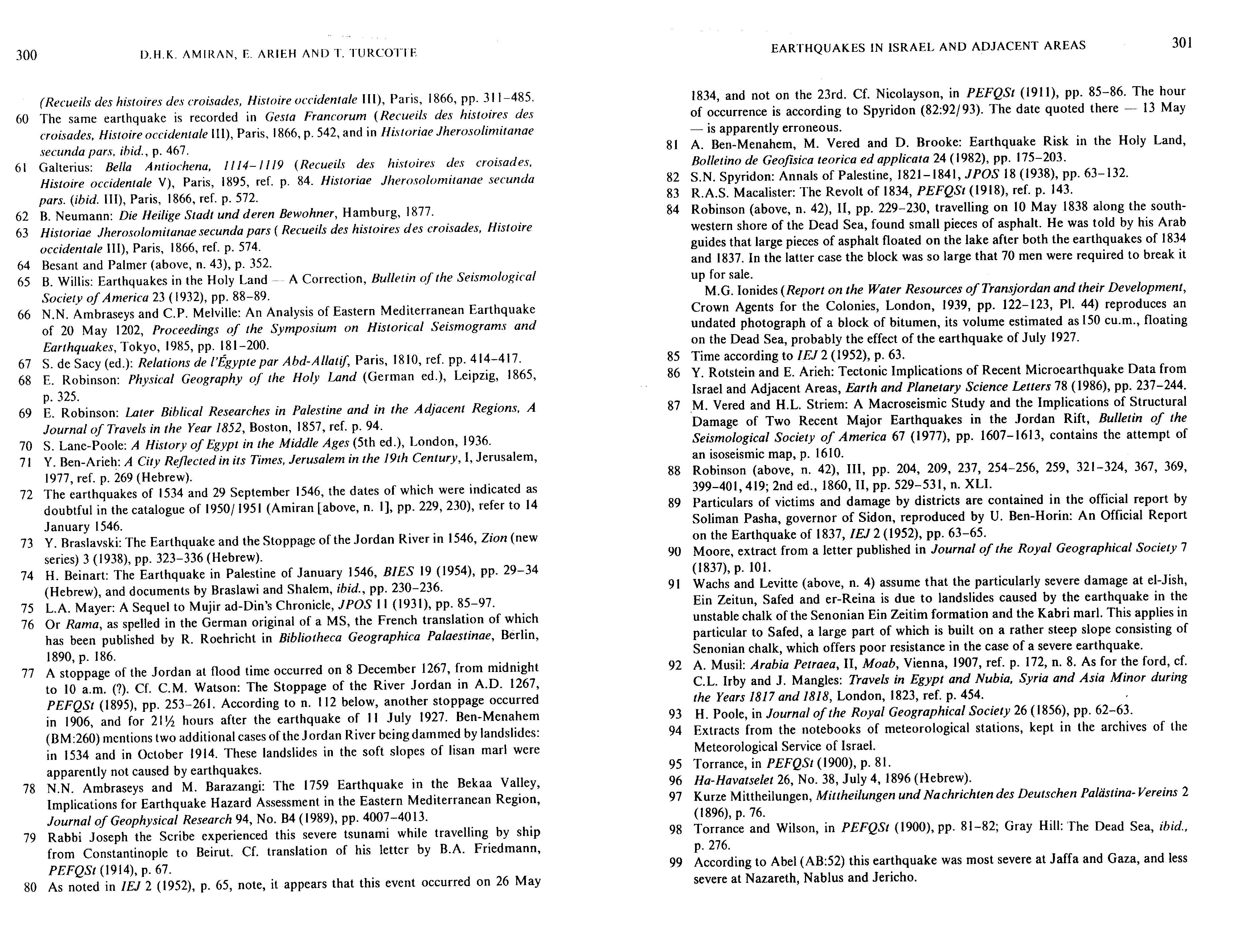
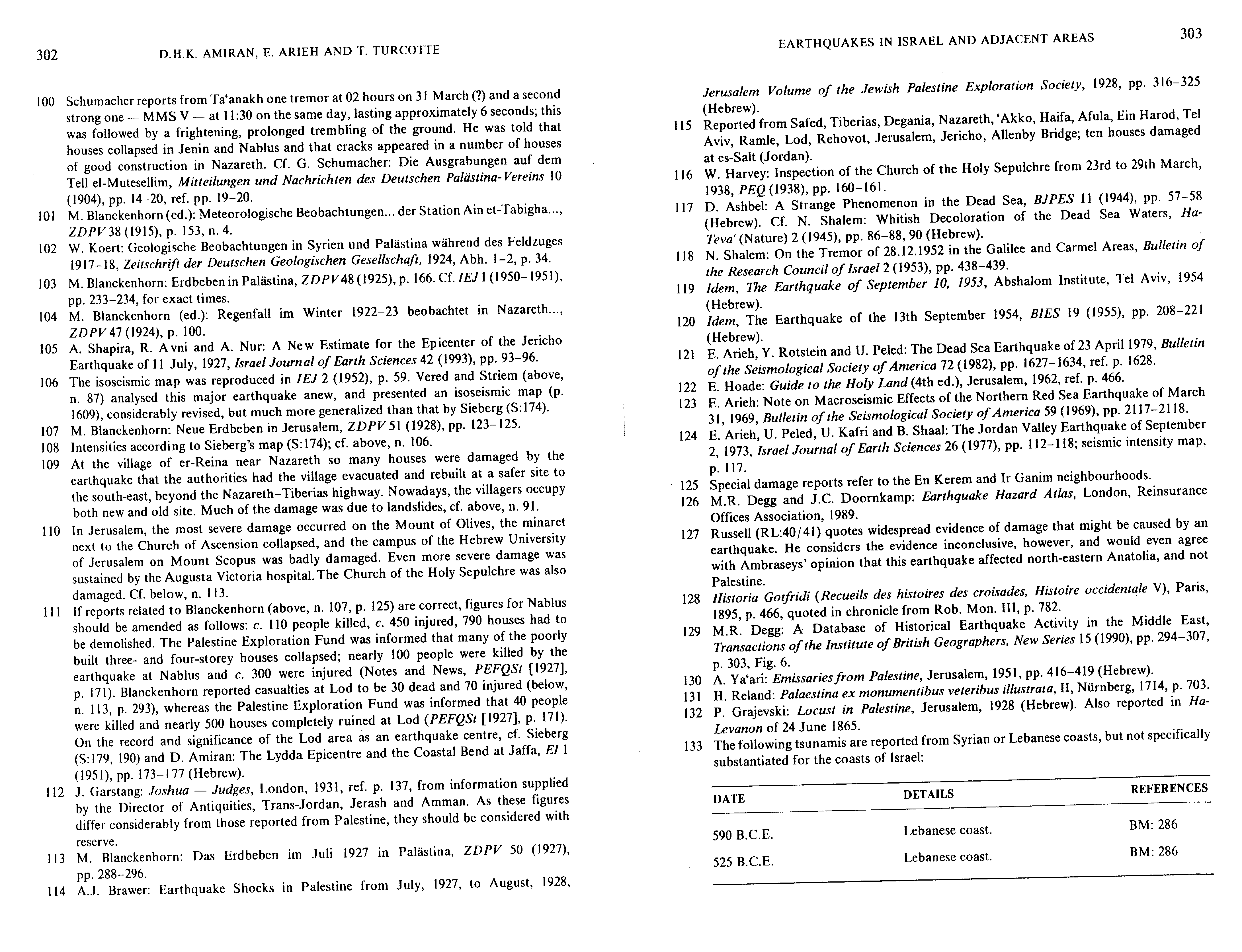
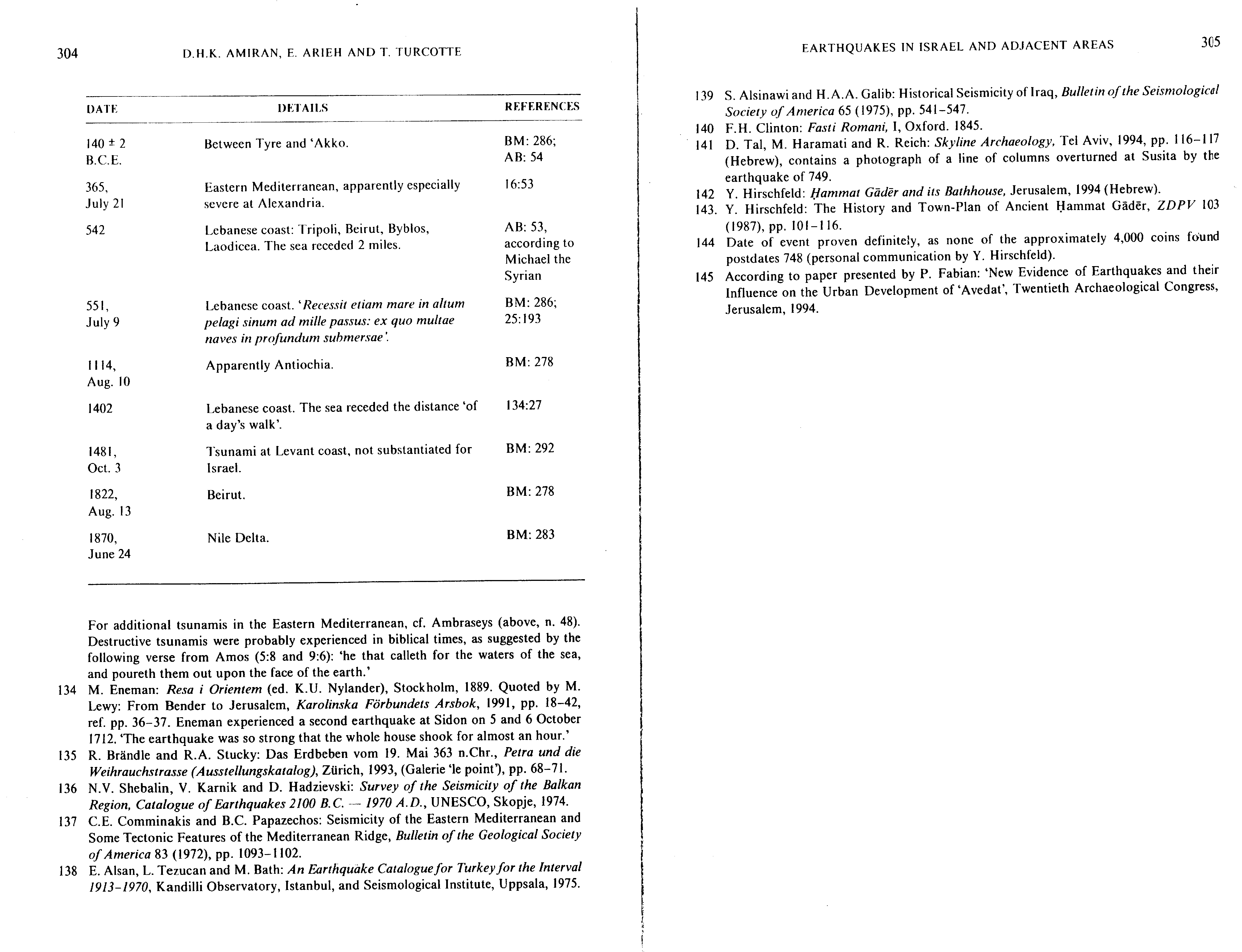
Amiran, D. H. K., Arieh, E. and Turcotte, T. (1994). "Earthquakes in Israel and adjacent areas: macroseismic observations since 100 B.C.E." Israel Exploration Journal 44: 260-305.
